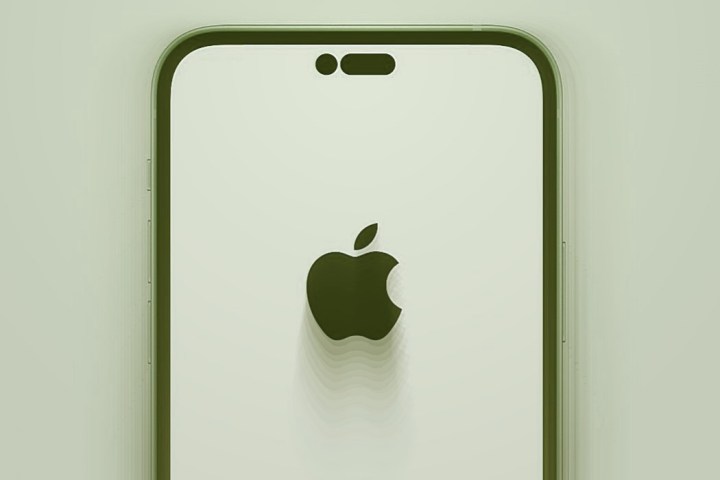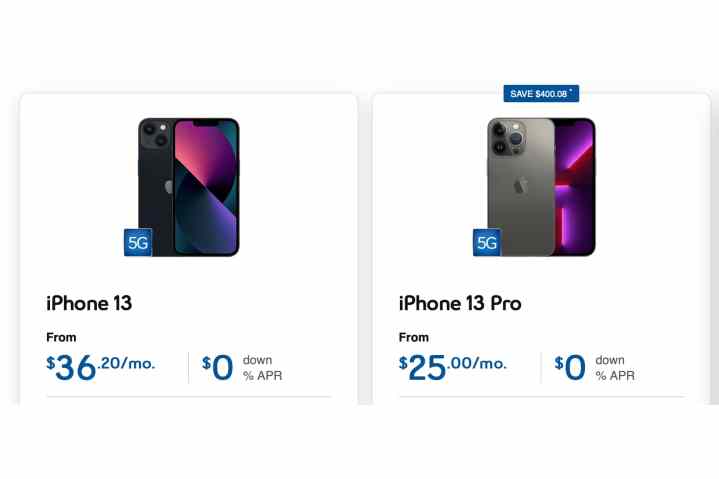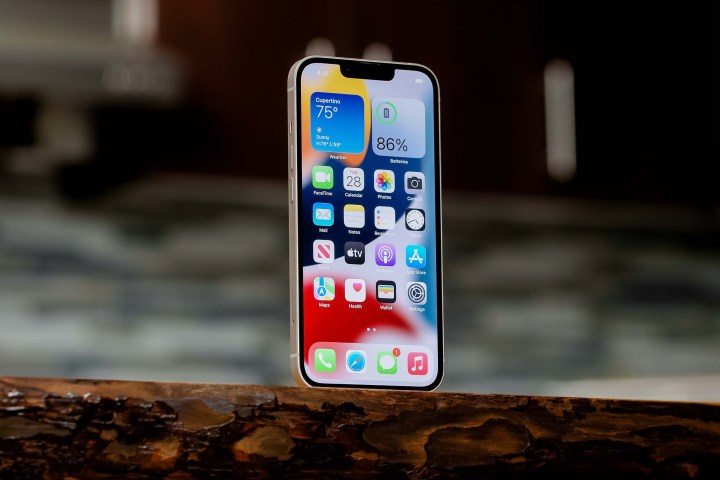You can almost mark your calendars for when Apple’s new iPhone models come along each year, and with the number of leaks and rumors circulating in the weeks and months leading up to Apple’s fall iPhone events, it’s also not hard to know what to expect. With only two exceptions in the past 12 years, Apple has held its events in September to announce its flagship iPhone lineup. Only the 2011 and 2020 iPhone releases bucked that trend; the iPhone 4S marked the first time Apple moved to fall iPhone events, and Apple was forced to push back the iPhone 12 launch due to pandemic-related delays.
Nevertheless, it’s a safe bet that the iPhone 14 lineup is coming next month. However, that begs the question of whether it’s worth waiting for Apple’s next leading-edge iPhones or opting for a tried-and-true iPhone 13 model now — especially with many carriers offering steep discounts to try and clear out their iPhone 13 stock before the new model launches. In some cases, like the one I’ll explain below, it might just make sense to buy an iPhone 13 now instead of waiting around for the iPhone 14.
What to expect from the iPhone 14
While Apple is sure to have a surprise or two up its sleeve, there’s already plenty of information on what we can expect from the iPhone 14, thanks to supply chain analysts and leakers. After all, with hundreds of thousands of workers preparing to produce millions of new phones, Apple can’t keep the lid on everything.
Ironically, the most significant thing we can’t be entirely sure of right now is the one thing many are taking for granted: the name of the new iPhone. Based on Apple’s recent history, chances are very good that it will indeed be called the iPhone 14, but we don’t know for sure until Apple takes the stage during its September event. Supply chain sources have been wrong about these things before — in 2017, folks were betting on the names “iPhone 7S” and “iPhone 8” for what turned out to be the iPhone 8 and iPhone X.
Regardless of what the next iPhone is called, there’s solid evidence that Apple is releasing four new models as it’s done for the past two years — two standard models and two “pro” models. However, this year we expect the diminutive 5.4-inch iPhone mini to be replaced with a 6.7-inch “iPhone 14 Max.” The result will be a more consistent lineup with standard 6.1-inch and larger 6.7-inch sizes in both tiers.
If rumors are true, Apple plans to widen the gap between its iPhone 14 and iPhone 14 Pro models even further this year. For the first time, the iPhone 14 Pro will get a faster and more powerful processor than its standard siblings. Most reports suggest that the iPhone 14 will feature the same A15 chip found in the iPhone 13 lineup, although it’s likely Apple will give it a new name, similar to what the company has done with the S-series chips in the Apple Watch over the past few years.
The iPhone 14 Pro will get the next-generation A16 chip, although, as with the iPhone itself, it remains to be seen what terminology Apple will use for this. Some are speculating “A16” and “A16 Pro.” Everything we’ve heard suggests that the iPhone 14 Pro will ditch the screen notch in favor of a hole-punch style camera, while the non-pro iPhone 14 retains the more traditional camera and screen design.

In addition to some significant camera improvements, the iPhone 14 Pro is likely getting an always-on display. That’s something Apple has reportedly been trying to work out for a while, and it’s likely we would have seen it last year had the company not faced supply chain problems. This will be unique to the iPhone 14 Pro, although the standard iPhone 14 models could get the faster ProMotion displays introduced on last year’s iPhone 13 Pro. Rumors are less clear on that one, but Apple will need to do something to set the iPhone 14 apart from its predecessor.
Why I bought an iPhone 13 instead
If Apple continues its recent trend, we can expect the iPhone 13 Pro and iPhone 13 Pro Max to be discontinued immediately following Apple’s September iPhone event. The iPhone 13 and possibly the iPhone 13 mini will remain in Apple’s lineup as less expensive options, taking up the spot currently filled by the corresponding iPhone 12 models. Similarly, the iPhone 12 will likely drop into the spot occupied by the iPhone 11 right now, with that 2019 model also being discontinued. If so, this will also mark the first time Apple will have only 5G-capable iPhones in its lineup.
The carriers likely know this, as I’ve observed an interesting pricing trend recently. While iPhone deals aren’t uncommon this time of year, the iPhone 13 Pro and iPhone 13 Pro Max are seeing steeper discounts than their non-Pro counterparts.
As I shared a few weeks ago, I’ve been planning to buy my daughter her first iPhone for her thirteenth birthday, and while I hadn’t firmly decided on getting her an iPhone 13, there’s something whimsical about matching the model number to her age. What really made up my mind, though, was the deep discounts I’ve seen from carriers. In June, I saw on-contract iPhone 13 discounts that made it less expensive than a similarly-specced iPhone 12. Since her birthday isn’t until September, I was in no rush at that point, but I determined to keep an eye on things to see what happened as we got closer to Apple’s fall iPhone launch.
Last week, I was shocked when I discovered that my carrier of choice was offering the iPhone 13 Pro on a 24-month contract for a lower monthly price than the standard iPhone 13.

While the iPhone 13 was also on sale, the savings weren’t nearly as steep. That’s not surprising since Apple is expected to continue selling the iPhone 13 as a new model for at least another year, likely dropping the price by only $100.
However, by October, the iPhone 13 Pro and iPhone 13 Pro Max will likely only be available as refurbished or clearance stock in limited quantities. Folks who traditionally go for the pricier iPhone Pro models are more likely to want the latest and greatest, and in a few weeks, that will be the iPhone 14 Pro.
I’d never expected to buy my daughter the higher-end iPhone 13 Pro, but it would have been absurd to pay more for the standard iPhone 13. Granted, my choice of colors was limited (it was only available in graphite), but that doesn’t matter as, like most teenage girls, I’m sure she’ll slap a case on it almost immediately anyway.

All other things being equal, it’s a good idea to wait until September and see what the iPhone 14 brings, both in terms of the new features and what it does to the prices of older models. Apple typically releases new iPhone models at the same price points as those they replace, so it would be silly to pay full price for an iPhone 13 now when you’ll be able to get an iPhone 14 for that same price only a few weeks from now.
However, all things aren’t necessarily equal. This is the time of year when you’ll find significant discounts from carriers — especially if you’re willing to commit to a contract. So, it’s a good idea to keep your eyes open since these deals are intended to clear out old stock. The iPhone 13 and iPhone 13 mini should live on for another year at a lower price, but the iPhone 13 Pro and iPhone 13 Pro Max will almost certainly be riding off into the sunset, so this could be your last chance to get your hands on one of those models. If you come across a deal as I did, buying an iPhone 13 now can be a fantastic way to go.
Editors’ Recommendations

